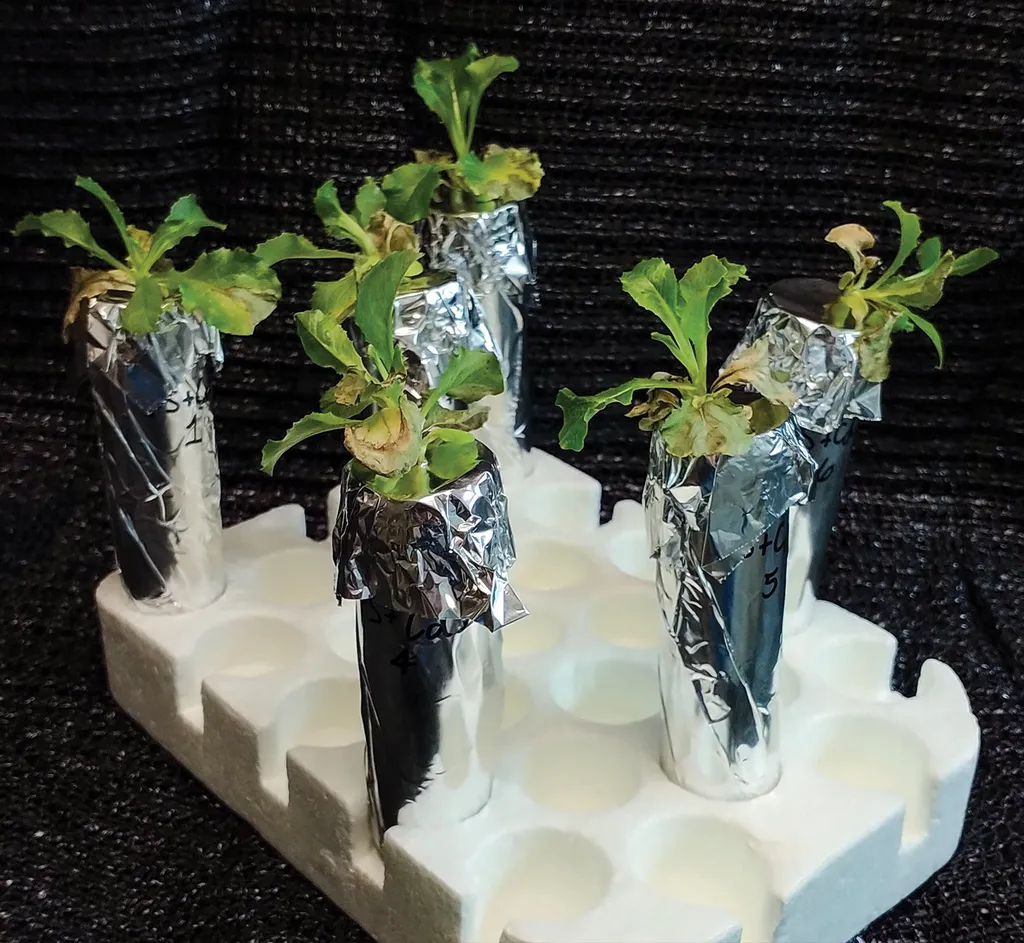In the heart of Iran, researchers at Urmia University are tackling a growing environmental challenge that threatens agricultural productivity and food safety: the combined toxicity of heavy metals and nanoplastics in soil and water. Led by Sevda Alizadeh from the Department of Biology, a novel study has uncovered a promising strategy to mitigate these contaminants’ effects on wheat plants, with potential implications for sustainable agriculture and the energy sector.
The research, published in the journal *Ecotoxicology and Environmental Safety* (translated as “Environmental Safety and Ecotoxicology”), focuses on the combined toxicity of arsenic (As) and polymethyl methacrylate nanoplastics (PMMANPs) in wheat. These pollutants pose a significant threat to plant growth and photosynthetic efficiency, inducing oxidative stress and limiting agricultural productivity.
The study employed a unique combination of cold plasma (CP) seed priming and a green-synthesized Ag/Zn/Fe nanocomposite (NC) to combat these pollutants. The results were promising: CP treatment enhanced germination by 5.34%, while both CP and NC independently and synergistically reduced As uptake, improved growth, and lowered oxidative stress markers. “This suggests enhanced chelation and detoxification mechanisms,” Alizadeh explained.
The research also revealed that arsenic primarily accumulates in plant roots, with limited translocation to leaves. Both arsenic and PMMANPs significantly inhibited plant growth and reduced photosynthetic efficiency, inducing oxidative stress marked by elevated root cell death, malondialdehyde (MDA), and hydrogen peroxide (H2O2) levels. However, the study found that antioxidant defenses were activated in response to these pollutants.
One of the most intriguing findings was the modulation of phenolic compound biosynthesis. The treatments increased the levels of gallic acid and p-coumaric acid, suggesting enhanced chelation and detoxification mechanisms. “This study demonstrates that CP priming combined with green NC application provides an effective, eco-friendly solution to alleviate combined heavy metal and nanoplastic stress in crops,” Alizadeh stated.
The implications of this research extend beyond agriculture. In the energy sector, understanding and mitigating the effects of pollutants on plant growth can contribute to the development of sustainable bioenergy crops. Moreover, the use of green-synthesized nanocomposites and cold plasma technology offers a novel approach to environmental remediation, with potential applications in soil and water treatment.
As the world grapples with the challenges of pollution and climate change, innovative solutions like those proposed by Alizadeh and her team offer a glimmer of hope. By combining cutting-edge technology with eco-friendly practices, this research paves the way for a more sustainable future in agriculture and beyond. The study was published in the journal *Ecotoxicology and Environmental Safety*, highlighting the importance of interdisciplinary research in addressing global environmental challenges.

